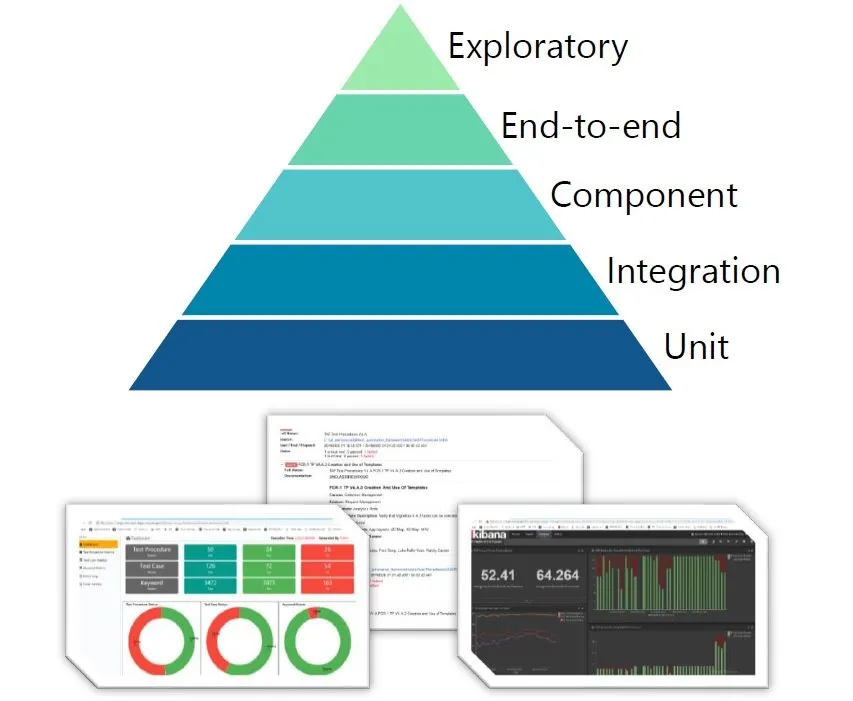
Epsilon C5I, Inc. has significant R&D expertise across the intelligence spectrum. From analysis, planning, and testing through strategic development, we find the solutions needed for our clients’ success. Some examples include:
Epsilon C5I designed, developed, and integrated an enhanced GEOINT Processing, Exploitation, and Dissemination (PED) capability known as “Vision” through a Small Business Innovation Research (SBIR) Phase 2 and Rapid Innovation Fund. Vision develops track processing and fusion algorithms that have the capability to:
Epsilon C5I engineering SMEs provide research, planning, and analysis for the integration and deployment of new SIGINT capabilities into DoD programs with key components that include:
Epsilon C5I also provided SIGINT, Digital Signal Processing, and Data Fusion Research and Development support to DARPA, Office of Naval Research (ONR) and Strategic Capabilities Office (SCO) for technology evaluation and maturation across all Technological Readiness Levels. Examples include:
Our collaborative efforts supporting the Joint Interface Control Document (JICD) 4.2 enterprise led to the development and deployment of TECHINT-related capabilities that include:
Epsilon C5I developed PlayRight, a simple but powerful scenario management and playback capability. PlayRight uses adapters to communicate with any complex system to mimic inputs and, when necessary, receive outputs to enable scenario-based testing, training, and/or system analysis. It is especially useful for interacting with systems that require expensive hardware to provide inputs to the system, such as radio receivers and cameras. It is also useful for interacting with systems that require inputs that are not available in the system's present location or in the system's present state of development.
Epsilon C5I developed a training solution for cryptologic systems called Maestro, which is built upon Epsilon C5I’s PlayRight technology. Maestro supports all phases of Information Warfare (IW)/Information Operations (IO) mission and platform readiness, delivering a toolset for realistic individual and team training, signal environment simulation, IW/IO asset training evolutions and Common Operating Picture (COP) integration. Key aspects of our solution include:
Epsilon C5I’s training approach includes a mix of curricula and hands-on activities such as integrating traditional podium/PowerPoint lessons with scenario-based training to provide a comprehensive learning experience that maximizes retention and real-world applications.
Epsilon C5I’s curricula includes multimedia (e.g., job sheets, slides, videos) and interactive tools with real world scenarios requiring problem-solving techniques (e.g., Stallion, Pegasus, Holster). We evaluate hardware, operating systems and virtualization strategies using our CMMI processes, delivering portable systems that the Navy is using to support this highly specialized training today.
As a result, underway training has been reduced by 20%, affording savings in travel costs and contributing to better training ashore. Epsilon C5I’s curricula is accessible via SCI network websites like Intellipedia and can be loaded directly on system drives so the curricula can be used in low bandwidth or disconnected environments.
The Automation Framework (TAF) is a collection of tools used to drive continuous tests, demos, and capability assessments that directly assists data exploitation system support. TAF models data types, equipment, servers, signals, and networks to produce realistic and repeatable synthetic data. This flow of data is integrated into a continuous development pipeline to continually test systems and their capabilities at the volume, variety, and velocity of real-world data. TAF augments development processes by providing consistent, repeatable system inputs to verify system outputs. We designed TAF to be modular, extensible, and consistent, effectively enabling separation of concerns and allowing for its functionality to be applied to use cases spread across multiple domains and security enclaves.
TAF tools include:
TAF is functioning in DoD test environments in ISR programs such as the DCGS-N Inc 2, C2 programs such as MTC2, and PaaS programs including the U.S. Navy’s Agile Core Services (ACS). TAF provides mission-focused programs data, automation, scalability, and third-party software development kits freeing up testers from tedious cognitive tasks. We are helping our customers rapidly deliver capabilities to address key missions, strengthening current military advantages and enhancing mission needs, operational outcomes, user feedback, and data.
We are using TAF components in a DevSecOps framework that has increased testing efficiencies by over 80%, improved defect detection by 80%, and reduced test execution time by 94%.
Most importantly, we are helping development teams gain trust from the operational and testing communities because we are using realistic, repeatable data to make assessments consistent and transparent for Developmental Testing (DT) and Operational Testing (OT).
